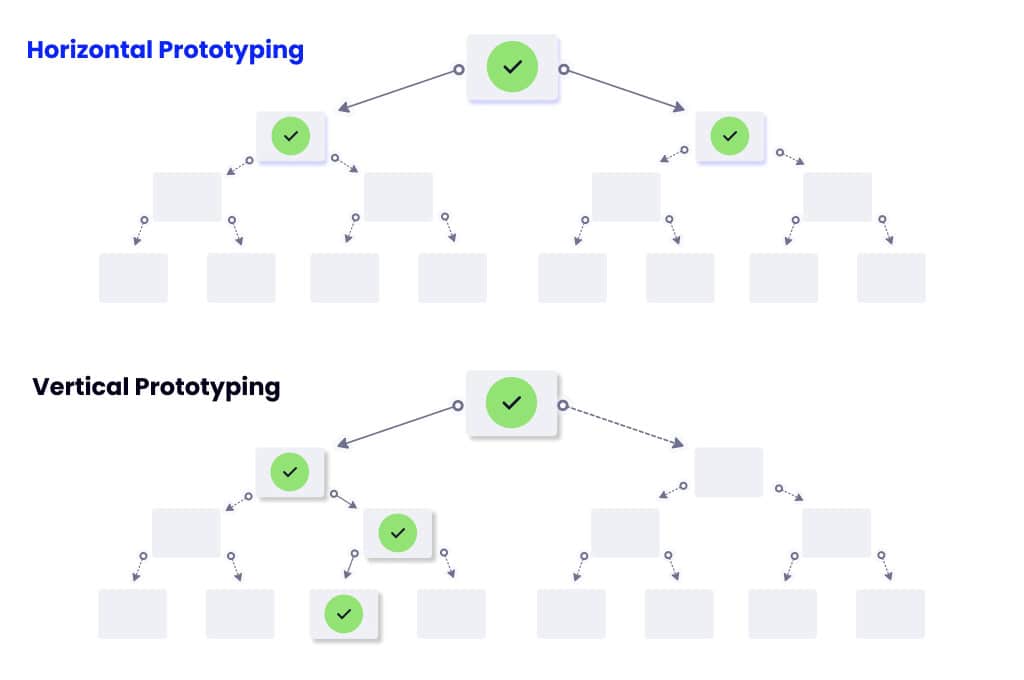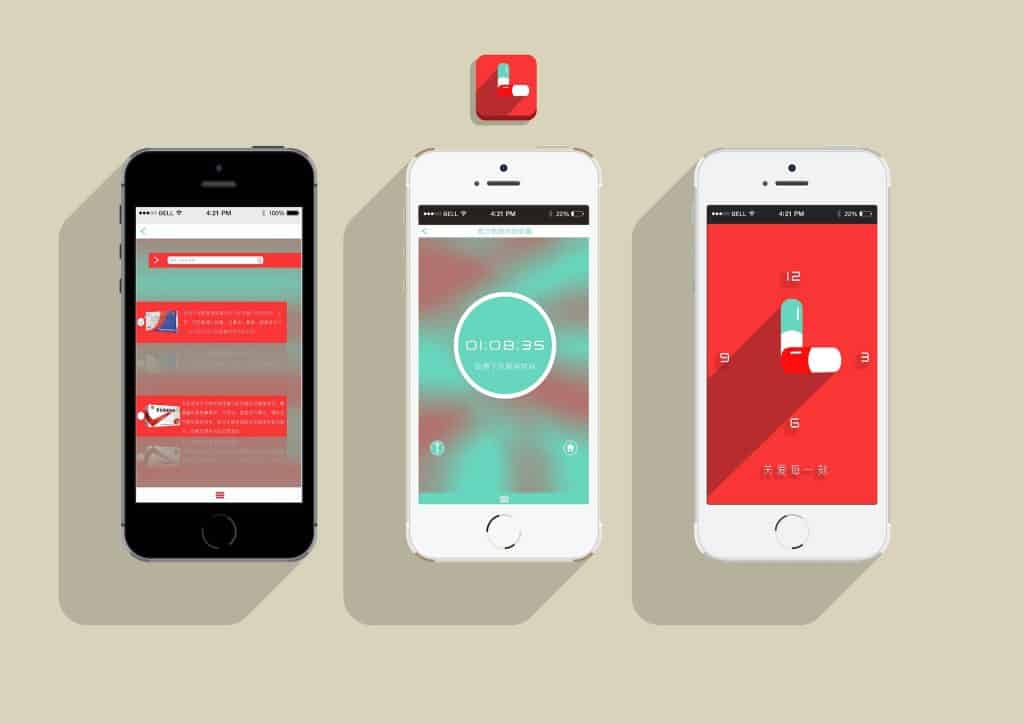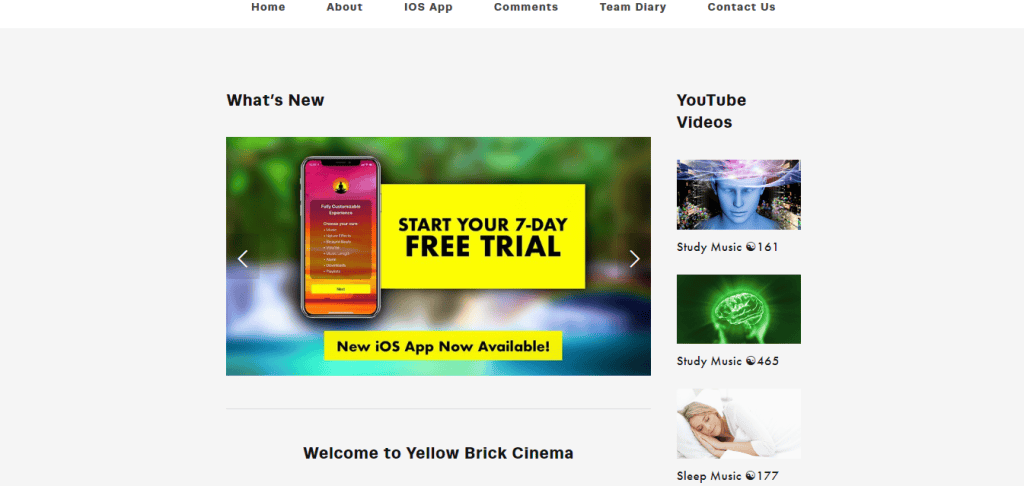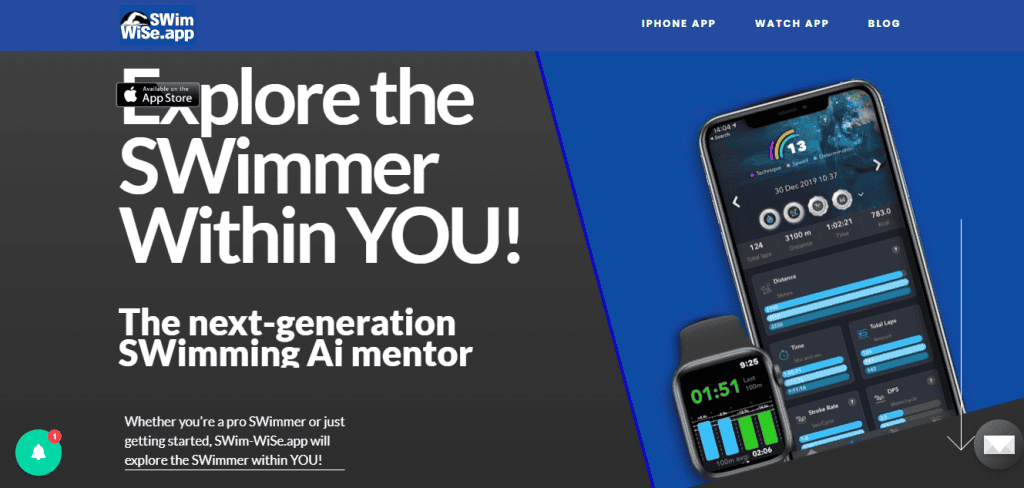Mobile apps have become a crucial part of each business. They improve business operations, support marketing strategies, and boost customer retention. Each company’s workflow differs, and there’s no right development process.
App development depends on numerous factors, such as the project size, the specificity of app requirements, future app changes, and the project deadline. Based on this, companies decide on the best approach to developing mobile apps that will fulfill their customers’ needs.
So, keep reading our guide to learn more about our software development approach!
1. Discovery Phase
The discovery phase in app development involves gaining a clear idea of the client’s vision for the project, their business goals, and all future requirements.
This knowledge helps developers translate the information into detailed app requirements and create a product that meets user expectations. It could also help you brainstorm the implementation, target audience, algorithm, and other elements or evaluate the project overall.
5 Components of the Discovery Phase
Now that you’re more or less familiar with the discovery phase, let’s go through its five components!
The introductory call involves contacting the client to discuss their business needs, project vision, and objectives. We collect information from all stakeholders, including customers, developers, industry experts, and salespeople, to identify their ideas or current issues.
Depending on what stage the client is at, they may need a discovery phase service, an audit service, an end-to-end app development service, or something else. This is one of the many things we determine during this call and define the next steps, the scope of the discovery phase, its budget, and duration.
2.Creating a Prototype (Optional)Prototyping is needed to assess how well the product fulfills stakeholder and user needs & expectations, which is why their feedback is crucial at this stage. Also, it’s important to implement prototyping in the early stages of the app development process because it gives everyone a look and feel of the app before moving on to the development phase.
At this point, the purpose of the prototype is to understand how the app will look and function as a finished product. It also helps us identify what modifications need to be made (if any), which is critical to optimize the time spent on app development.

Based on this, two types of prototypes can be used. If we want to have a preview of the entire app, we go for a horizontal prototype. But if we want to gain an in-depth overview of just one aspect, for example, the app’s checkout process, we need a vertical prototype.
3.Technical Project Research & AnalysisBelow are the required steps to determine for research and analysis:
- the time it will take to finish the task,
- choosing a technology stack,
- defining the architecture and logic,
- setting the development milestones, etc.
In this part of the discovery phase, we estimate the value of the client’s technical and business-related requirements. Our CTO, CEO, and development team help estimate the total cost of the project using their extensive experience.
4.Time Management & Risk AssessmentOnce we’ve discussed all the above, we need to set the timeline, identify the skills required, etc. Our team will determine the estimated time and account for potential risks and delays at each phase. With this thorough evaluation, you’ll have a clear idea of the risk percentage associated with each stage.
Effective time and risk management helps us ensure that projects are delivered on time, within budget, and meet the desired quality standards.
5.Outcome PresentationOnce we’ve finalized some of the critical elements of the project, we’ll present the app idea and design solutions to the client who can still make some changes or suggestions at this point.
Request a free quote from Weelorum
We will help you to go through all the stages of mobile application smoothly
Contact us2. Audit Phase
The audit phase is a stage for clients who already have made discovery, have some technical requirements, or have something done (app creation, design, or development).
Key Components
Regardless of the type, most of our audit projects follow the next path:
When the client has a clear idea of what they want to change, we can easily gather all pertinent details and start the audit. We can define the budget, duration, and outcomes before our team dives into the project.
2.AuditThe audit shows issues that need to be fixed or areas for improvement. This can include benchmarks, tech audits, UI/UX, checking analytics, and more.
An audit can last for two to three days. During this time, our team checks your designs, code, and everything you have according to the steps outlined by the audit goals and method required.
3.EstimationLastly, the estimation is done with the help of the founders as well, discussing what needs to be implemented. We communicate the next steps and agree upon an estimated time, costs, and processes with the client.
3. Contract and Prep Work
The app development process continues with contract & prepayment.
For the convenience of all the app development phases, risk reduction, and predictability of results, we break the software development process into sprints.
A sprint is a small, fixed amount of time during which a team completes a limited part of a project. In particular, in one sprint, we create a usable and releasable product increment (e.g., it’s not just a “raw” piece of code but a fully tested module).
A new sprint always starts immediately after the end of the previous one. In our practice, the optimal sprint length for all the stages of building an app is two weeks.
How Is the Payment Carried Out?
Our clients make payments once a week or every two weeks (after finishing the next sprint) based on a report on the number of person-hours spent. To track this indicator, we use Harvest. Thus, the client can track the project’s progress in real time.
Thanks to this transparent approach, the client understands the amount of money spent on the finished stages of the app and how much is left in the budget.
4. Pre-Development
This is one of the fastest stages of application development, lasting about 40–60 hours. At the time of the implementation of this stage, there is still no program code and no tested & ready-to-use software modules. Thanks to a list of requirements from the client’s side and a significant amount of work done by our system architects, we can develop a high-level system design.
Our specialists determine the technologies and software tools for the project, distribute tasks among team members, set the exact time frame, and calculate the final project budget.
As a result, the approved system design defines the list of software components, interaction with third parties, functional characteristics, databases used, and much more. The design is generally approved using a design specification document (DSD).
If graphic design or prototype development isn’t already completed, it will be the next step in the process.
5. UI/UX Design
What’s important for this stage is to always provide user-centric design. This approach comes with understanding our client’s needs, ensuring that design decisions prioritize the user.
We always try to maintain consistency and use UI patterns that help us create intuitive navigation and a seamless experience. On top of this, we embrace simplicity and minimalism, as our goal is to create a usable mobile app with clear visuals. Contrasting colors and fonts are used to draw attention to specific elements.
More precisely, the UI/UX design starts with wireframes that help us visualize the layout of the mobile application. Then, we select readable fonts, colors that align with your needs and preferences, and intuitive navigation elements like tabs and CTAs.
We also use tools like Figma, Illustrator, Lottie, and After Effects that streamline the design process as much as possible.

6. Development and QA Testing
After the requirements and application design are finally approved, we move on to the next stage of the software life cycle — writing the program code following the previously defined requirements.
From this moment, our system administrators set up the software environment, and front-end programmers develop the program’s user interface and describe its interaction with the server. Back-end developers implement the server part of the application.
Our specialists also create unit tests to check the correct operation of the code for each component of the system, review the written code, create builds, and deploy the finished software in the software environment. This cycle is repeated until all product requirements are met.
On average, 7-9 developers work on a full-scale scale project. The main technologies we use are NodeJs, ReactJS, Golang, NextJS, ViewJS, and Java. For feature-rich mobile applications, native development is usually preferred, but we also use React Native and Flutter.
As for QA and testing, our company writes test plans and test cases from the discovery phase onwards. The process is continued after the first or second sprint (depending on the project). In the testing phase, our specialists detect bugs missed while writing the program code.
When a defect is found, the tester writes a bug report and sends it to the developers. The developers fix it, and testing is carried out again until the end criteria are reached (roughly speaking, this is compliance with the specification document).
Let’s create your own mobile application!
Contact us7. Application Deployment and Support
When the application has passed the final stage of testing, and there are no critical defects left, it enters the release phase. At the same time, our technical support department always stays in touch to communicate with users and provide support.
When post-release bugs are found, they are reported to our development team. After that, depending on the problem’s severity, we will either release the update immediately or defer it to the next version of the app.
Furthermore, we offer support packages that depend on the project and its size. The package is a certain period (or free fixes, or a specific number of hours per month spent on maintenance/support). It can also come in the form of a warranty, or we can decide with the client to perform additional development if completely new features are offered.
Projects We’ve Realized Our Approach On
Weelorum is a team of experts with a unique approach to the mobile software development process. As you may have noticed, we pay great attention to the stages of interaction that precede the implementation of the product. Thus, we minimize the number of costly edits, downtime, and release delays. You can see the effectiveness of our approach by looking at several examples of already implemented projects from our portfolio.
Pro Photo Shoot: Model Casting and Booking App
We built a social networking app for the professional photography industry. We are especially proud of the interface created by our designers: all you have to do is just scroll through page after page to find new models, photographers, makeup artists, and stylists. There’s also an opportunity to send direct messages and communicate in real time.
You can select your preferred location, search for the type of talent you’re interested in, and explore many individuals. If you click on them, you will be able to go through their portfolio and rates. We even enabled checking basic information about them, like their genres and how far they’re willing to travel with or without compensation.
The best part is that our team made this app available for both iOS and Android devices with the help of Swift and Kotlin.

Yellow Brick Cinema: Relaxing Music App
We developed a music streaming app that lets users choose between different music genres, customized tracks, nature sounds, and beats to relax, sleep, and study to. The team came up with the concept and found a way to monetize it, created a style guide, designed the UI/UX, and developed the software.
Currently, it has over 6 million satisfied users who can relax, sleep, meditate, focus, or de-stress with the help of Yellow Brick Cinema. This app is built with the help of our knowledgeable team and tools like Swift, Ruby on Rails, and Realm.

Swim Wise: Track Your Swimming Success
Swim Wise is an Apple Watch-compatible solution for counting laps, speed, distance, heart rate, and measuring swimming style. This high-precision application is unique in its functionality and has no analogs on the market yet.
Swim Wise is a next-generation AI-based swimming mentor, providing you with summaries like detailed statistics, highlights, technique improvements, new records achieved, and much more. The secret behind its success is not only our team of developers but also the superb tools like Swift, which help us bring you the ultimate experience.

Final Thoughts
The success of your mobile app depends mainly on how well you have implemented the app development process. You need to remember that this is an ongoing journey, and it doesn’t stop once the app is launched.
Our team at Weelorum focuses on all the essential steps, such as the discovery phase, in which we understand the needs and preferences of our clients, the audit phase, contract and prep work, planning and pre-development, designing the UI/UX, development and QA testing, and application deployment & support.
If you believe that our team will help you get a user-friendly and intuitive mobile application that will bring you profits, don’t hesitate to contact us!
FAQ
Why Do I Need the Discovery Phase?
The discovery phase helps clients and developers get on the same page with what they need and expect from the project. Clients can express their vision and reassess their requirements to fit their budget. It ensures the final product matches the client’s expectations. Estimations based on discovery phase materials are usually more precise and customers can always involve more specialists to work the detailed requirements, which are one of the deliverables of discovery.
The results of the discovery phase also help startups secure funding for their app.
Do I Need a PM or Can I Manage Myself?
If your past experience is in project management of software development teams, it could be an option. Otherwise it’s better to hire one from the team you’re working with. The project manager’s role is to ensure all tasks are completed according to the timeline and within budget. They also handle communications between the client and development team and manage all the risks involved in the project. Since in-house PMs usually know their teams better and worked with them for a while, it’s also reducing risks of miscommunications at the beginning of the project.
Will You Help Me Upload Apps to the Stores?
Sure! We can help you with the app deployment process, but you’ll need a developer account with the appropriate app store. Our help can include content preparation like screenshots, descriptions, as well as helping with all the settings in stores.
What Are the Monthly Costs for the App/Website?
The monthly cost for maintaining an app or website is around 5% to 10% of the initial development cost. The amount varies based on the app’s complexity and maintenance factors. Various elements will affect this: server and hosting costs, updates, app store expenses, etc.